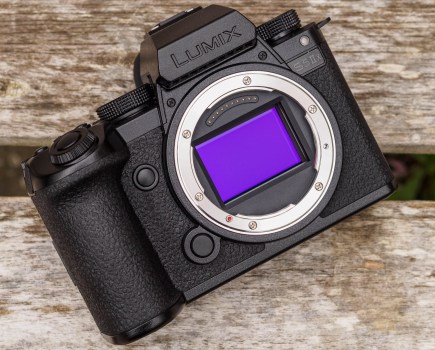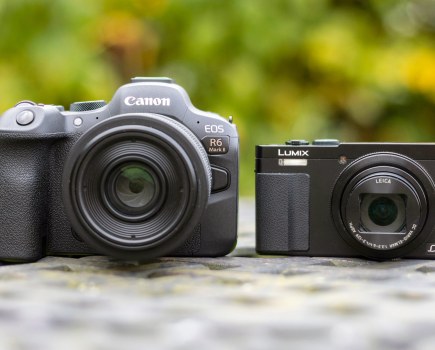
A manual focus lens gives you more control and help you get your subject sharp. Credit: Angela Nicholson
Every time I photograph sport, action or music I thank my lucky stars that I live in the age of sophisticated autofocus (AF) systems. With a good camera, the AF system gets my subject in focus almost instantaneously, and can even track it around the frame so that shot after shot is pin-sharp. I’m also a fan of the subject-detection and Eye AF modes to help get the most important part of the scene sharp. It’s such clever, useful technology!
So you might think that I’d hate using manual focus lenses – but actually, I love them. Or at least I love them on mirrorless cameras. Why just mirrorless cameras? Well, they have the advantage of allowing you to magnify the image and show focus peaking in the viewfinder. These two features make it easy to ensure the focus is exactly where you want it to be. They make it much easier to get the subject sharp than when you’re looking through a DSLR’s optical viewfinder.
I wouldn’t want to use manual focus lenses for every subject, but I find that they can help me connect with my photography and get in the moment. Instead of worrying about where the autofocus point is, I think about where I want the focus to be. There’s a subtle difference. And as I focus the lens, I see the impact that the shift in the focus has on the image. That, in turn, can make me think a little more carefully about the aperture and depth of field that I want to use. And consequently, I find the lens’s focus scale a useful composition tool that encourages me to consider the proximity of the first object and distance between elements in the scene.
No worries about focusing
I especially like using short focal length manual focus lenses because in some situations you don’t need to worry about focusing at all – you just need to think about the subject distance. A quick glance at the focus scale and a twist of the focus ring and you’re set-up, ready to start shooting whatever comes your way.

The Voigtländer Heliar-Hyper Wide 10mm f/5.6 lens (shown above courtesy of Park Cameras) is an extreme example, because at f/8 you can get everything sharp from 30cm to infinity. But jump up in focal length to the Voigtländer Color Skopar 21mm f/3.5 Aspherical and at f/8 you still get sharpness from around 80cm to infinity. This is useful for a range of photo genres, but I find it particularly helpful for street and what I like to call ‘out-and-about photography’. With the camera set to aperture priority mode, or a shutter speed preselected in manual exposure mode and the sensitivity set to Auto, the focus and exposure are taken care of and I can concentrate almost exclusively on composition. I spend less time looking at and adjusting the camera controls and more time looking in the viewfinder. That gets me in the zone where I can enjoy spending time with my camera.
 Photographer and journalist Angela Nicholson has reviewed cameras for Amateur Photographer and was formerly our technical editor. She’s tested everything from compacts to medium-format cameras and also runs the site for women photographers, She Clicks.
Photographer and journalist Angela Nicholson has reviewed cameras for Amateur Photographer and was formerly our technical editor. She’s tested everything from compacts to medium-format cameras and also runs the site for women photographers, She Clicks.
The views expressed in this column are not necessarily those of Amateur Photographer magazine or TI Media Limited






